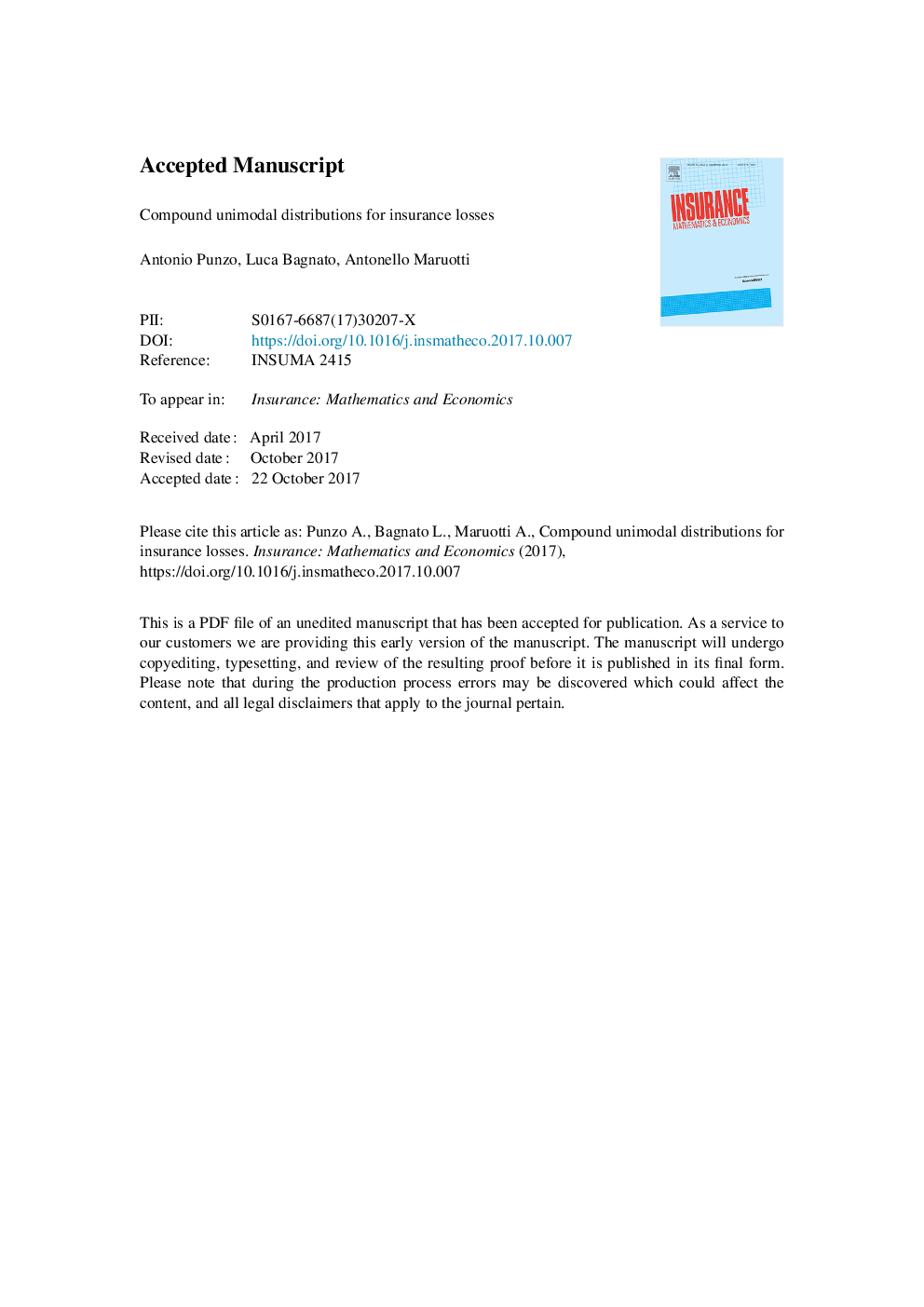| Article ID | Journal | Published Year | Pages | File Type |
|---|---|---|---|---|
| 7354615 | Insurance: Mathematics and Economics | 2018 | 23 Pages |
Abstract
The distribution of insurance losses has a positive support and is often unimodal hump-shaped, right-skewed and with heavy tails. In this work, we introduce a 3-parameter compound model to account for all these peculiarities. As conditional distribution, we consider a 2-parameter unimodal hump-shaped distribution with positive support, parameterized with respect to the mode and to another variability-related parameter. The compound is performed by scaling the latter parameter by a convenient mixing distribution taking values on all or part of the positive real line and depending on a single parameter governing the tail behavior of the resulting compound distribution. Although any 2-parameter distribution can be considered to derive its compound version in our framework, for illustrative purposes we consider the unimodal gamma, the lognormal, and the inverse Gaussian. They are also used as mixing distributions; this guarantees that the un-compound distribution is nested in the compound model. A family of nine models arises by combining these choices. These models are applied on three famous insurance loss datasets and compared with several standard distributions used in the actuarial literature. Comparison is made in terms of goodness-of-fit and through an analysis of the commonly used risk measures.
Related Topics
Physical Sciences and Engineering
Mathematics
Statistics and Probability
Authors
Antonio Punzo, Luca Bagnato, Antonello Maruotti,
